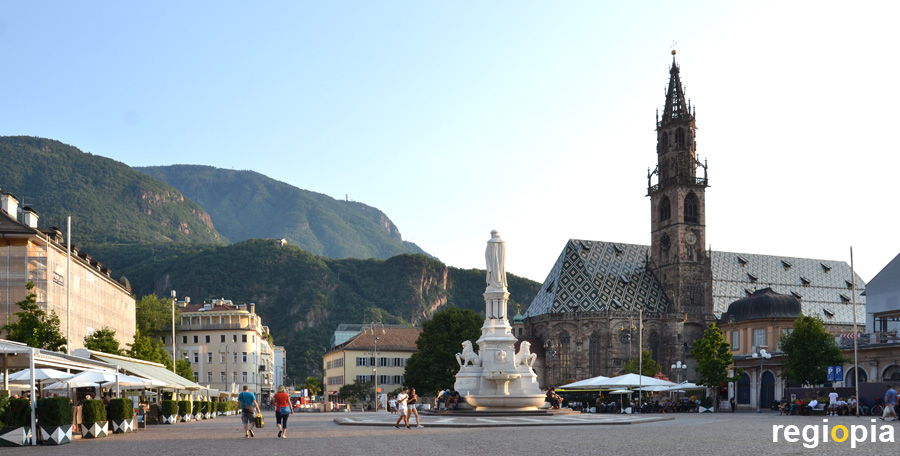
Piazza Walther
The Piazza Walther is the largest square in the center of Bolzano. It was laid out in 1808 and named after Maximilian, since Bozen was part of Bavaria at that time. After Napoleon's defeat in Waterloo 1815, South Tyrol came back to Austria and the square was renamed Johannsplatz. In 1889 a memorial for the german poet Walther von der Vogelweide was erected in the middle of the square. In 1901 the square was named Waltherplatz. In 1935 the monument was moved to a park because the Italians got Bolzano after the First World War. The square was named Piazza Emanuele III. and many Italians settled in Bolzano. The Walther square has always been a bone of contention between the countries claiming power in South Tyrol. The monument to Walther von der Vogelweide came back on the square in 1985.
The Cathedral of Bolzano is also located on Walther square. The church was completed in 1499 and is considered to be one of the most important Gothic buildings in the Alps. The lion portal on the west side is one of the attractions of the cathedral. The 65 m high bell tower rises on the north side of the nave. The roof is covered with a diamond pattern. In the interior, the Gothic pulpit with its stone carvings is worth seeing.
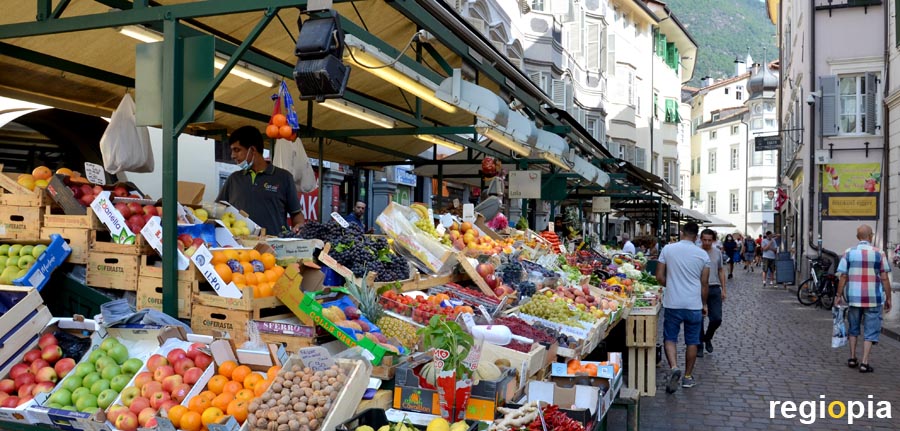
Fruit Market
The Obstmarkt (fruit market) is one of the sights of Bolzano that no visitor should miss. The colorful range of local specialties is not only pleasing to the eye. In addition to fruit and vegetables, you can also find South Tyrolean bacon, sausages and other delicacies. The market stands spread out on both sides of the narrow square. Other specialties of the region can be found in the neighboring restaurants and shops.
The name Obstplatz is derived from Obertor (Upper Gate), which used to stand here. Another attraction is the Neptune Fountain, which is on the corner of Laubengasse. The Neptune Fountain in the fruit market is a popular meeting place.
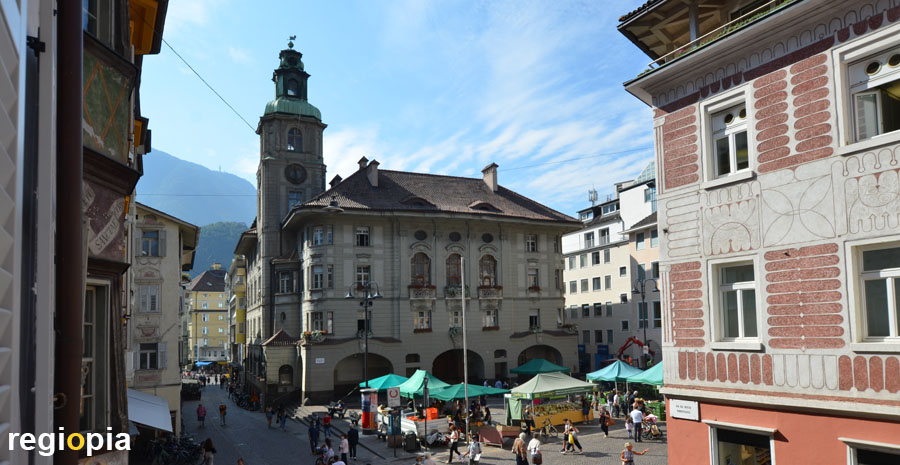
Bolzano City Hall
Another market takes place on the Rathausplatz. The city hall itself is not as old as it looks, it was built in 1907 in the neo-baroque style. The Munich architect Carl Hocheder designed the new Bolzano city hall. The ceiling painting by Gottfried Hofer in the council chamber is worth seeing. The old town hall was located at Laubengasse 30, here you can find a passage called "Am Alten Rathaus" (at the old town hall) today. Laubengasse is the main shopping street in Bolzano. The "Lauben" (arbors) are arcades that are in front of the shops. The arbors are a typical architecture of the Alpine region.
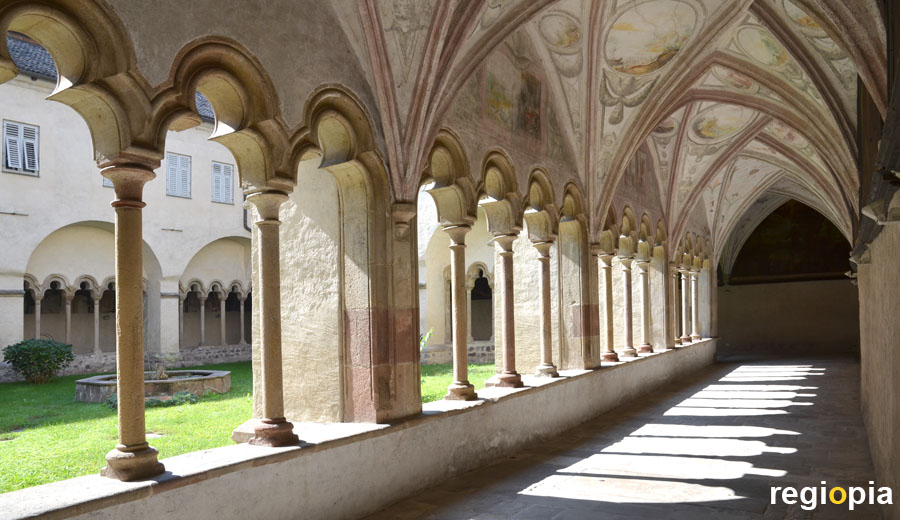
Franciscan monastery
The Franciscan monastery is one of the top sights of Bolzano. The order of the Franciscans was founded by Francis of Assisi in Italy around 1210. The Franciscan monastery in Bolzano was built in the 13th century and is therefore the oldest Franciscan monastery in the German-speaking area. The Franciscan Church was built in the late 15th century. The cloister from the 14th century with painted, Gothic vaults and impressive wall paintings is particularly worth seeing.
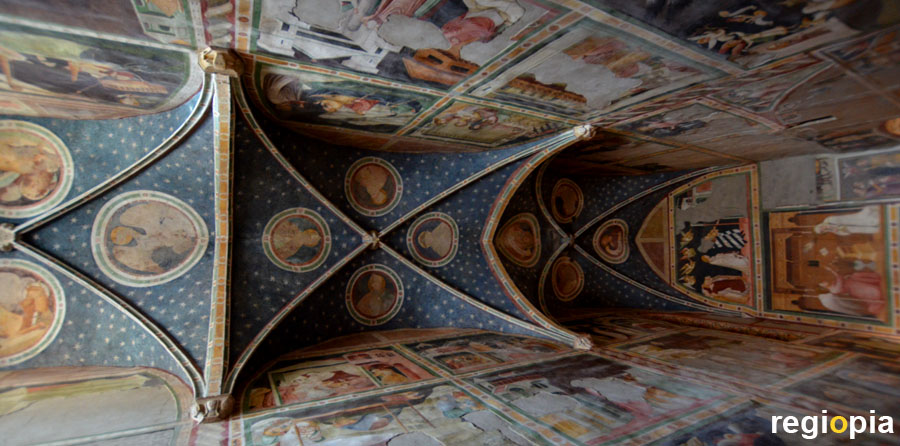
Dominican monastery
From the outside, the Dominican Church looks very simple, only a small rose window on Dominikanerplatz indicates the church. The church belongs to the Dominican monastery, which was built on this site around 1272. The originally Gothic monastery has been rebuilt several times. The Gothic vaulted ceiling of the church was decorated and painted with Rococo stucco work in the choir.
The narrow St. John's chapel (photo) with its unusual ceiling and wall paintings is interesting from an art-historical point of view. The frescoes are painted by artists of the Giotto School from Florence, who brought a new technique to Bolzano through their spatial representation of people, with light and shadow play. The St. John's chapel was built as a family burial place by a Florentine banker around 1320. It is located between the choir of the Dominican church and the cloister.
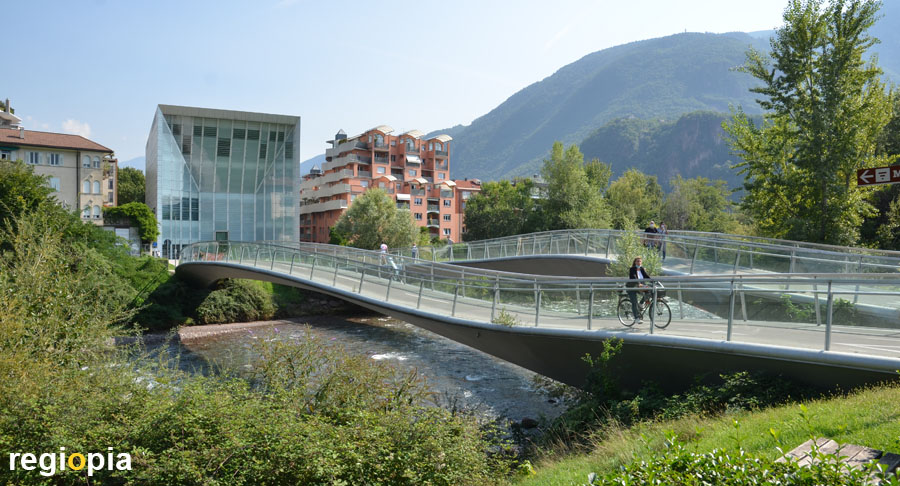
Museion Bolzano
The Museion is a museum for modern and contemporary art. The glass structure stands on the banks of the Talferbach, which is spanned by two curved bridges. The Museion was designed by the Berlin architects Krüger, Schuberth and Vandreike and opened in 2008. The focus of the collection is on Italian and regional art. Language and art is one of the museum's core themes. In the evening, the white facade occasionally becomes a projection surface for light art. For more information, opening times and current exhibitions, see the link.
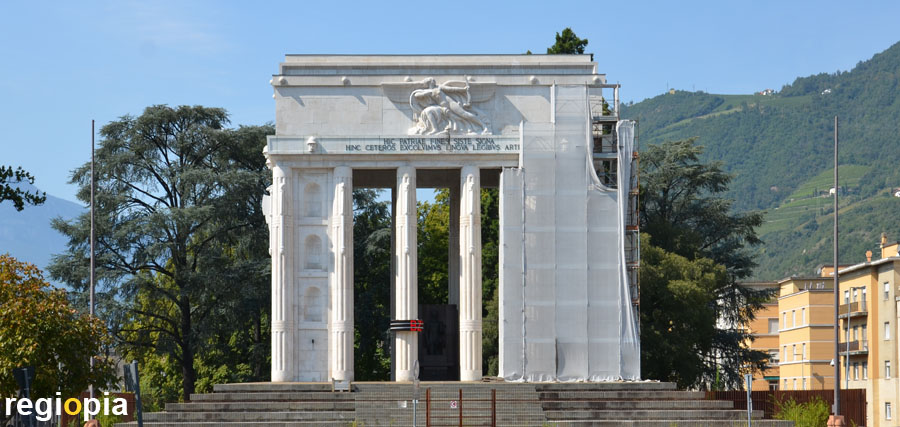
Monumento alla Vittoria
After the First World War (1914-1918) Tyrol was divided and South Tyrol became part of Italy. Since the population was largely German-speaking and continued to see itself as part of Austria, fascist Italy built a Triumphal arch and a new Italian city in the west of Bolzano. The 20 m high and 19 m wide "Monumento alla Vittoria" was designed by Marcello Piacentini. In order to be able to erect it, a not yet completed war memorial of the Austrian Army was demolished. The slogan on the east side of the monument causes even greater outrage.
"Make a mark on the border of the fatherland. From here we form the remainder (meaning barbarians) through language, law and the arts."
On the frieze you can see a goddess shooting an arrow to the north (Austria). The victory monument in Bolzano was inaugurated in 1928. Since 2014 there has been an exhibition about fascism in South Tyrol under the Arch of Triumph. Due to the fascist settlement policy, there is an Italian majority of 73% in Bolzano. In the whole of South Tyrol, on the other hand, around 60% of the population speaks German. This monument in the Piazza della Vittoria still divides the minds on both sides.
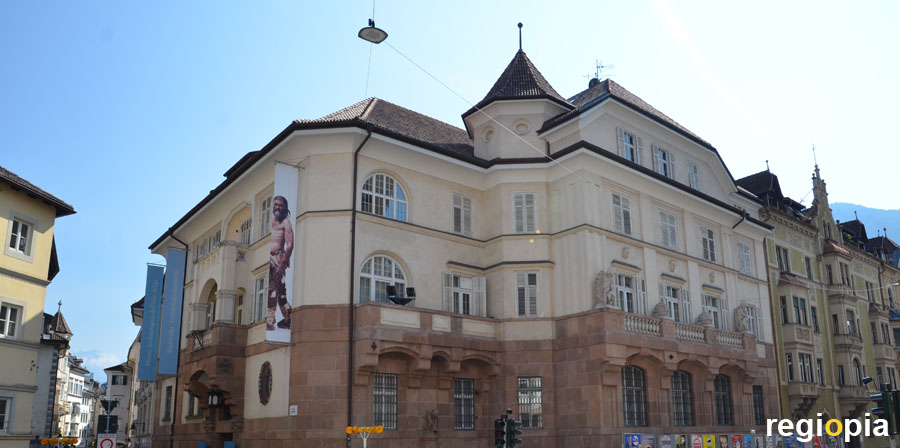
Archaeological Museum of Bolzano
The South Tyrolean Archeology Museum is one of the tourist attractions of Bolzano because the Ötzi is exhibited here. The ice man was found in 1991 in the Ötztal Alps in South Tyrol. Ötzi died around 3,200 BC very likely by a wound caused by an arrow. The arrowhead was still in his shoulder blade. It is not clear whether this injury led directly to his death.
In the archaeological museum of Bolzano the body is stored in a cooling chamber. Ötzi's clothes and belongings are exhibited in the museum. The museum shows life in the Neolithic Age and presents the research results that were gained from the discovery in the glacier. For opening times and admission prices, see the link.
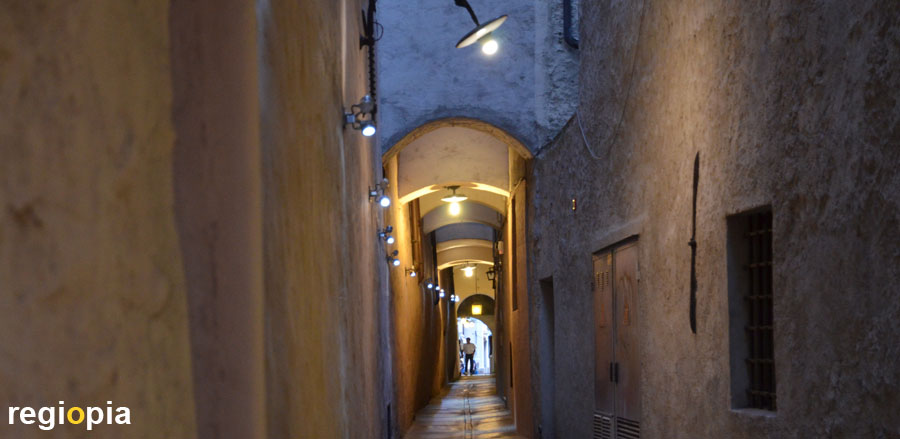
Bolzano alleys and arcades
In the old town of Bolzano there are many well-preserved houses from the time of the Habsburgs. The center is still characterized by the austrian architecture. Steep roofs with a large overhang, painted plaster facades and arcades on the ground floor. The small alleys and passages that run through the center in a north-south direction are very picturesque. The passages are partially covered and there are shops and smaller shops. These narrow streets are a popular photo opportunity, especially in the evening.
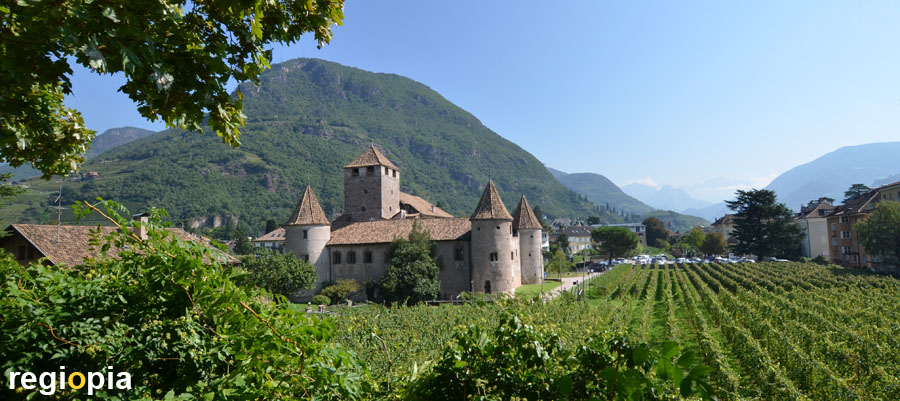
Maretsch Castle
The Maretsch Castle is surrounded by grapevines on the northern outskirts of Bolzano. The castle does not stand on a hill and has a wall and four corner towers for defense. In the northwest of the castle there is a fifth tower that is taller then the corner towers. This keep was built by Heinrich von Maretsch around 1275. The wall was added in the 14th century. The beautiful frescoes are a testimony of the Renaissance. Maretsch Castle today belongs to the city of Bolzano and is used for conferences. Visites are only possible on request.
The legend of Maretsch Castle:
The knight went on a crusade to the Holy Land and left his young wife alone in the castle. Many years passed without news from her husband. One day there is a knock at the gate and a pilgrim from Jerusalem reports of the death of the Knight of Maretsch. A short time later, the pilgrim identifies himself as the catles owner. He wanted to test his wife's loyalty and now ran after her. However, she had already thrown herself from the tower out of mourning. Out of sheer misfortune, the knight rammed his sword into his own body.
Claudia-de'-Medici-Straße, Str. 12
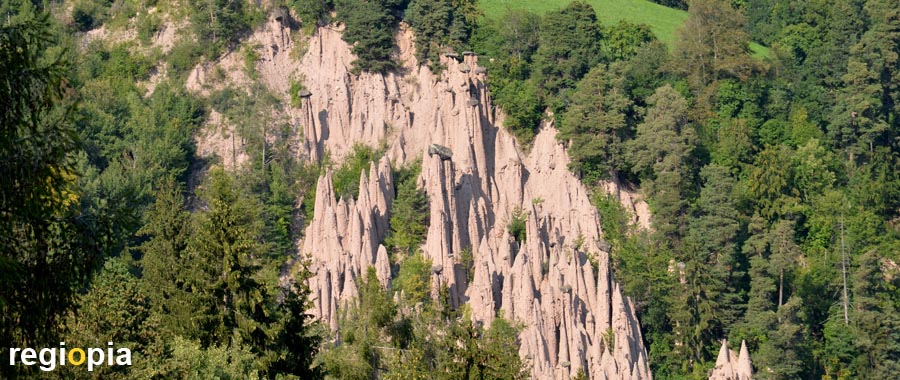
Earth pyramids of Lengmoos
The earth pyramids between Lengmoos and Mittelberg are directly on the Strada Provinciale 73. The pyramids are made of clay and are a result of weathering. They are caused by rain that creates gorges. Where large stones form a roof, less clay is removed and conical pyramids are created. If the upper stone falls down at some point, the clay pyramid will stay there for a while before it slowly disappears due to erosion. The bizarre natural wonder is about 12 kilometers as the crow flies from Bolzano. There is a hiking trail from Lengmoos with viewpoints and display boards.
Tourist Map of Bolzano
Travel Guide Bolzano
ads


